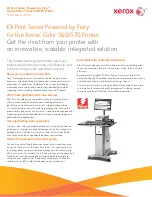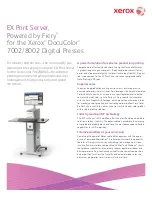
Chapter 2. Architecture and technical overview
65
configuration changes are necessary to enable a system to use 64 KB pages; they are fully
pageable, and the size of the pool of 64 KB page frames on a system is dynamic and fully
managed by AIX 5L.
The main benefit of a larger page size is improved performance for applications that allocate
and repeatedly access large amounts of memory. The performance improvement from larger
page sizes is due to the overhead of translating a page address as it is used in an application,
to a page address that is understood by the computer's memory subsystem. To improve
performance, the information needed to translate a given page is usually cached in the
processor. In , this cache takes the form of a translation lookaside buffer (TLB).
Because there are a limited number of TLB entries, using a large page size increases the
amount of address space that can be accessed without incurring translation delays. Also, the
size of TLB in has been doubled compared to POWER5.
Huge pages (16 GB) are intended for use only in very high performance environments, and
AIX 5L does not automatically configure a system to use these page sizes. A system
administrator must configure AIX 5L to use these page sizes and specify their number using
an HMC before the partition starts.
A user can specify page sizes to use for three regions process' address space with an
environment variable or with settings in an application's
XCOFF
binary using the
ldedit
or
ld
commands. These three regions are: data, stack, and program text. An application
programmer can also select the page size to use for System V shared memory using a new
SHM_PAGESIZE
command to the
shmctl()
system call.
The following is an example of using system variables to start a program with 64 KB page
size support:
LDR_CNTRL=DATAPSIZE=64K@TEXTPSIZE=64K@STACKPSIZE=64K <program>
Systems commands (
ps
,
vmstat
,
svmon
, and
pagesize
) have been enhanced to report various
page size usage.
2.14.2 Linux
For the p5-520 and p5-520Q, Linux distributions are available through Novell SUSE and
Red Hat at the time of writing. The server requires the following version of Linux distributions:
SUSE Linux Enterprise Server 9 for POWER Systems or SUSE Linux Enterprise Server
10 for POWER Systems, or later
Red Hat Enterprise Linux AS 4 for POWER, or later
For information about the features and external devices that are supported by Linux, refer to:
http://www.ibm.com/systems/p/linux/
For information about SUSE Linux Enterprise Server 9, refer to:
http://www.novell.com/products/linuxenterpriseserver/
For information about Red Hat Enterprise Linux AS, refer to:
http://www.redhat.com/software/rhel/details/
Note: Not all features available on AIX 5L are available on Linux. IDE VD-ROM/DVD-RAM
DLPAR operation is not supported by Red Hat Enterprise Linux AS 4 for POWER.
Summary of Contents for REDPAPER 520Q
Page 2: ......
Page 8: ...vi IBM System p5 520 and 520Q Technical Overview and Introduction...
Page 14: ...xii IBM System p5 520 and 520Q Technical Overview and Introduction...
Page 38: ...24 IBM System p5 520 and 520Q Technical Overview and Introduction...
Page 104: ...90 IBM System p5 520 and 520Q Technical Overview and Introduction...
Page 108: ...94 IBM System p5 520 and 520Q Technical Overview and Introduction...
Page 109: ......
















































